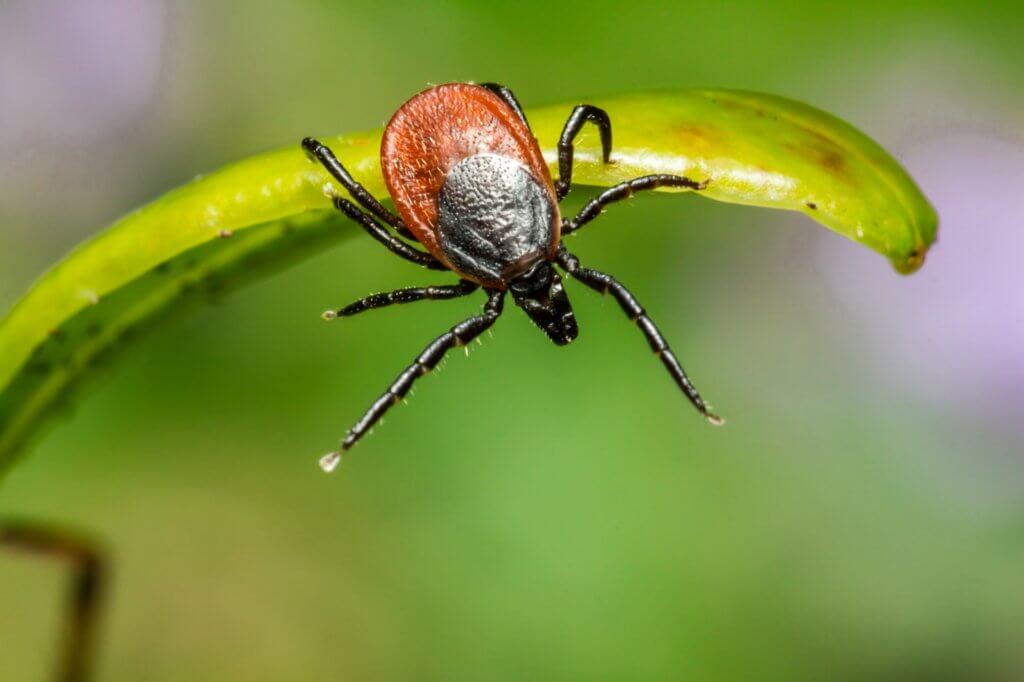AMHERST, Mass. — Ticks may be small, but they can cause big health problems in the form of Lyme disease. Now, just in time for tick season, a promising new lead in the fight against Lyme is emerging. Scientists at the University of Massachusetts Amherst-based New England Center of Excellence in Vector-Borne Diseases (NEWVEC) have successfully demonstrated that the blood of the white-tailed deer kills the corkscrew-shaped bacterium that causes the illness.
The most common vector-borne disease in the United States, Lyme disease infects humans through the bites of black-legged ticks. Initially, an infection typically causes symptoms such as fever and fatigue, but Lyme disease can spread throughout the body to the heart and nervous system if left untreated. According to the CDC, doctors diagnose roughly 476,000 people with Lyme disease each year.
“Deer are vitally important to the survival of deer ticks, but they are not involved with transmitting the Lyme bacteria, Borrelia burgdorferi,” explains senior author Stephen Rich, professor of microbiology, in a university release. “We’ve known for some time that ticks taken from white-tailed deer are not infected, and we speculated that something about the deer prevented those ticks from becoming infected. But until publication of our paper, no one had done the experiment to show that deer blood – specifically the serum component of white-tailed deer blood – kills Lyme.”
These remarkable findings may one day help produce new strategies and approaches for Lyme disease prevention and treatment, says lead study author Patrick Pearson, a Ph.D. student in NEWVEC.
“In these experiments we determined that white-tailed deer serum kills the Lyme bacterium. The next important question will be to understand exactly how deer blood kills Lyme bacteria,” Pearson explains.
Humans are an ‘accidental host’ for ticks
This project is just one aspect of NEWVEC, which received $10 million in funding from the CDC last year to prevent and reduce tick and mosquito-borne diseases in the New England area. NEWVEC intends to bring together multiple academic communities, public health practitioners, residents, and visitors across the Northeast, a location where Lyme infections tend to be more common.
The Lyme disease bacterium passes to juvenile blacklegged (Ixodes scapularis) deer ticks through the mice the arthropods feed on. Those infected ticks go on to pass the bacterium to humans when they feed on people.
“We are the accidental host,” Prof. Rich adds. “The ticks that bite us are actually looking for a deer because that’s where they breed. Without the deer, you don’t have ticks. But if you had only deer, you wouldn’t have any Lyme.”

Deer blood naturally kills the germ
To carry out this experiment, the research team obtained blood serum from a semi-captive white-tailed deer herd at Auburn University in Alabama. Study authors don’t believe these deer had any exposure to ticks and the bacteria responsible for Lyme disease. Next, they grew the Lyme disease germ in test tubes and added the deer serum.
“And lo and behold, it killed the bacteria,” Prof. Rich notes. “Whatever it is in the deer that’s killing the germ is part of the innate immune system, a part of the immune system that precedes antibodies.”
“The Lyme bacterium has proteins on its surface that protect it from the human innate immune system. Deer blood is somehow different such that Lyme bacteria are apparently unable to protect themselves from the innate immune system of white-tailed deer,” Pearson comments.
Moving forward, researchers say the next logical step is to determine the precise mechanisms in deer blood that kill the bacteria.
“We’d like to determine if it’s something we can induce in humans,” Prof. Rich concludes. “Or maybe we could use this somehow to our advantage to reduce the incidence of Lyme disease in the wild.”
The study is published in the journal Vector-Borne and Zoonotic Diseases.

